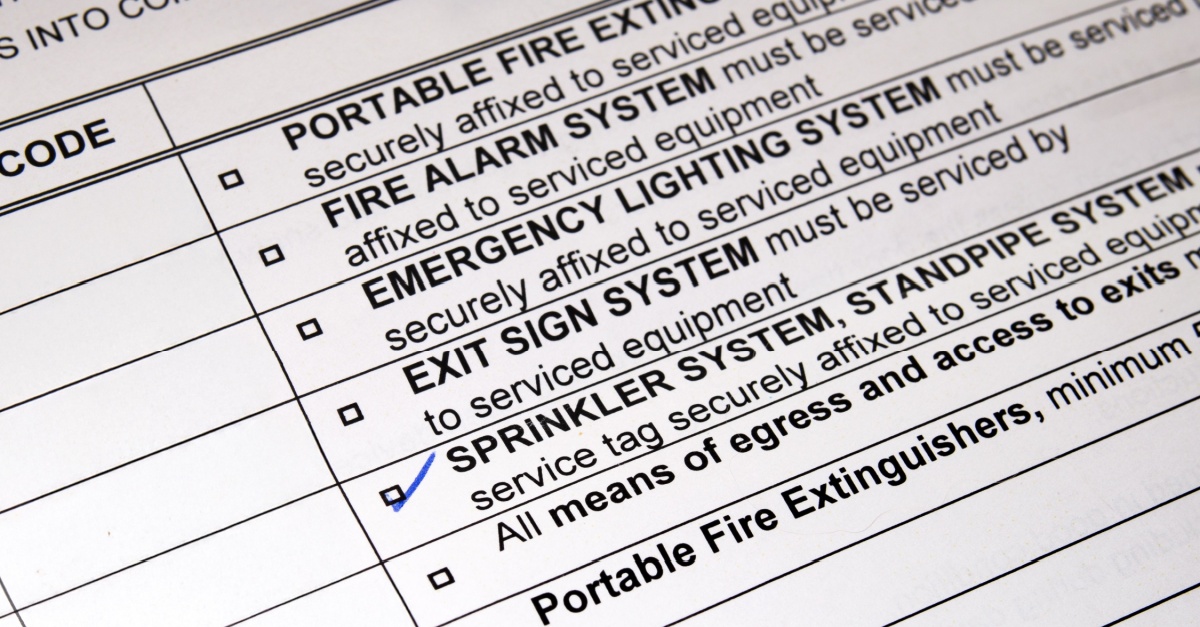
The Real Cost of Doing a Commercial Renovation or Refresh Without a National Partner
July 24, 2025
You know exactly what happens when you try to manage a commercial renovation across multiple locations without a national partner. The permits take longer than promised. Contractors disappear for two weeks without explanation. Materials show up wrong, late, or both. Your reopening dates slip, your budgets balloon, and somehow every location looks slightly different despite identical specs.
The worst part? Everyone acts like this is normal — like burning through contingency budgets and extending closures is just “the cost of doing business.”
The real cost of piecing together local contractors for your commercial renovation isn’t just the obvious stuff — overtime, delays, compliance issues. It’s the revenue you lose from extended closures, the fines from permit problems, and the brand damage when your locations don’t match your standards.
We broke down what this actually costs companies versus working with a single national partner like BrandPoint Services. The numbers might surprise you.
Cost #1: The Vendor Coordination Tax You Never See Coming
Here’s the first number that’ll make you wince: The average commercial renovation project burns 4-9% of its budget on rework. More than half of that — 52% — happens because your different contractors couldn’t communicate properly with each other. Multiply that across the industry and you’re looking at $31.3 billion in waste annually.
That’s real money disappearing into the gap between “what we said” and “what they heard.” Yet the rework is just the visible damage. The real killer is what happens behind the scenes.
Every additional subcontractor means another site walk, another scope interpretation, another set of change orders that somehow always trend upward. Your internal team gets buried coordinating vendors — industry benchmarks show every $1 million project eats up 120+ staff hours just managing the chaos. That’s three weeks of someone’s full-time attention spent playing telephone between contractors who should be talking to each other directly.
A national general contractor flips this equation. Single dashboard. Standardized scopes of work. One invoice instead of 12. Suddenly, your team can focus on strategy instead of babysitting grown adults who can’t figure out who’s responsible for the drywall.
Cost #2: When ‘Just a Few More Days’ Costs Seven Figures
All that vendor chaos from cost #1 not only wastes money but kills your timeline. Seventy percent of commercial projects still report delays, and 87% of those trace back to permitting bottlenecks. Your local contractor in Tampa doesn’t know the quirks of Tampa’s permit office. Your Denver guy thinks a two-week material delay is “pretty normal.” Meanwhile, your reopening date slides from March to April to “sometime before summer.”
Here’s where the math gets ugly fast. Material costs are still running 40% higher than pre-COVID, and late orders can add weeks to your schedule. But the real damage isn’t the extra material costs — it’s the revenue bleeding out while your doors stay closed. A typical specialty retailer pulls in $300-$600 per square foot annually. That 10,000-square-foot store sitting idle for “just one more week”? You just kissed $800,000 to $1.5 million in sales goodbye.
National partners cut through this mess with pre-negotiated supplier agreements and teams who understand how permits work across different jurisdictions. They don’t treat your timeline like a suggestion because they know every day matters to your bottom line.
Cost #3: How Cutting Corners Cuts Deep
Schedule pressure then creates a dangerous temptation to cut corners on compliance and safety. And the penalties for getting this wrong aren’t slap-on-the-wrist fines anymore. OSHA’s 2025 maximum penalty hits $165,514 per willful violation, with serious violations running $16,550 each. One safety incident can wipe out your entire project savings and then some.
The problem with piecemeal contractors isn’t just that they don’t know the local regulations — it’s that they think they do. Your guy in Phoenix might be an expert with Arizona codes, but put him in a Chicago commercial renovation and watch the inspection failures pile up. Each failed inspection means delays, rework, and another round of fees. Plus, your insurance carrier is watching those safety incidents add up, and they’re not shy about adjusting your premiums accordingly.
National partners eliminate this Russian roulette with centralized safety programs and teams that hold licenses across multiple jurisdictions. They know which inspector in which city cares about which specific detail, because consistency in safety protocols is both good business and the difference between a clean project and explaining a massive fine to your CFO.
Cost #4: 50 States, 50 Different Rule Books
Those safety violations are just the tip of the regulatory iceberg. Try managing a multistate commercial renovation when 35% of U.S. jurisdictions stretch permit cycles to seven to nine months. Every month your project sits in permit purgatory costs a median $8,000 in interest alone on a $5 million project.
That’s nearly $75,000 in carrying costs before you’ve even broken ground.
But the real nightmare? Every state thinks its way is the right way. California’s energy codes, Texas fire safety requirements, New York’s ADA interpretations — they’re all different, and they all matter. Your local contractor in Denver knows Colorado inside and out, but hand them a project in Florida and watch them discover that what works in the Rockies doesn’t fly in the Sunshine State. Cue the delays, re-submittals, and the joy of explaining to leadership why “simple compliance” turned into a six-month ordeal.
National partners don’t play guessing games with regulations. They maintain in-house code libraries and actual relationships with local authorities having jurisdiction. When your permit reviewer in Nashville has a question, he’s talking to someone who’s worked with that reviewer before, not someone frantically using AI deep research tools to figure out Tennessee building codes at 2 a.m.
Cost #5: When Your Materials Disappear into the Supply Chain Bermuda Triangle
When you think you’ve beaten the Mount Everest of regulations, the supply chain will always find a way to come back and remind you who’s boss. Forty percent of suppliers are expecting moderate-to-severe material disruptions over the next 12 months, and with steel and aluminum tariffs sitting at 25%, your budget projections from six months ago might as well be written in crayon.
Here’s where using local contractors bites you. Your guy in Milwaukee might know a great lumber supplier. Yet, he’s making spot purchases at whatever price the market demands that week. Meanwhile, you’re watching material costs swing wildly between locations because nobody’s aggregating your buying power. National contractors are locking in bulk pricing that runs below what your regional players can touch — and when you’re talking about a multimillion dollar renovation, that’s real money.
The worst part? Your local contractors treat material delays like weather — something that just happens. National partners approach supply chains like chess, not checkers. They’re forecasting demand, locking in lead times, and building relationships that mean when materials get scarce, their projects don’t get bumped to the back of the line.
Cost #6: When Your Brand Standards Become Brand Suggestions
All those supply chain headaches are about to compound into something worse: a brand that looks different in every market. When you’re using disparate crews across multiple locations, “corporate blue” becomes 50 shades of “close enough.” Your Seattle store gets one interpretation of the design standards, your Atlanta location gets another, and somehow your Miami renovation ends up looking like it belongs to a completely different company.
The damage goes beyond aesthetics. Brand audits consistently show that inconsistent fit-outs can tank your Net Promoter Scores. Your customers notice when Store #247 feels nothing like Store #146, and they’re not shy about sharing their confusion on social media. That “cost savings” from using local contractors just turned into a brand perception problem that your marketing team gets to explain to the board.
A single national partner doesn’t treat your brand standards like a suggestion box. A single partner enforces standardized kits-of-parts, finish schedules, and QC checklists whether working in ZIP code 90210 or 10001. When your CEO walks into any location, it looks like your brand, not like whatever interpretation the local crew thought was “pretty close.”
Tying it Together: Stop Bleeding Money on Vendor Management
Think hiring multiple contractors saves money? Think again. While splitting work between several vendors might look cheaper on paper, the hidden costs of coordination, delays, and quality control can turn your “budget-friendly” renovation into a financial black hole. Smart businesses are discovering that one reliable partner often costs less than a circus of contractors.
- Administrative Nightmare Versus Single Phone Call: Managing five different vendors means five different contracts, schedules, and headaches. A one-stop partner eliminates the endless email chains, scheduling conflicts, and finger-pointing when something goes wrong — freeing your team to focus on running the business instead of playing project coordinator.
- Downtime Costs More Than You Think: Every hour your location stays closed for renovations equals lost revenue and frustrated customers. Specialized partners work overnight and coordinate seamlessly, keeping your doors open and cash registers ringing while generic contractors force you to shut down during peak hours.
- Quality Control Becomes Someone Else’s Problem: Multiple vendors create multiple opportunities for miscommunication and subpar work. When one partner handles everything from flooring to graphics, it owns the entire result — no more pointing fingers between the painter and the flooring guy when colors don’t match.
- Speed Wins When Rollouts Scale: Rolling out updates across 50 locations with different contractors in each city? Good luck coordinating that timeline. National partners with established networks can execute simultaneous rollouts that would take months to coordinate with local vendors in each market.
- Predictable Pricing Beats Budget Surprises: Change orders and cost overruns love multi-vendor projects like mosquitos love summer barbecues. Comprehensive partners provide detailed scopes upfront and absorb coordination risks that typically balloon budgets when everyone works independently.
Stop Bleeding Money, Start Building Smart
Your renovation budget started reasonably. Six months later, you’re explaining to leadership why you’re 30% over budget and still waiting for permits in three states. The Denver contractor went dark, Atlanta’s materials showed up wrong, and somehow Phoenix ended up with flooring that looks nothing like what everyone approved. Those “savings” from using local guys? They evaporated somewhere between the third change order and the compliance fine that made your legal team very unhappy.
At BrandPoint Services, we solve this mess with crews in all 50 states who understand that your timeline matters to your bottom line. Our project managers don’t disappear for two weeks, our dashboards show you what’s happening in real time, and our buying power means you get the materials you ordered when you ordered them. Whether you’re refreshing five locations or rolling out 500, we handle the after-hours work that keeps your doors open and revenue flowing — because we know your success depends on projects that finish on time, on budget, and looking like your brand.
Ready to renovate without the headwinds? Connect with BrandPoint Services to put one plan, one partner, and one guaranteed result to work on your next refresh.






